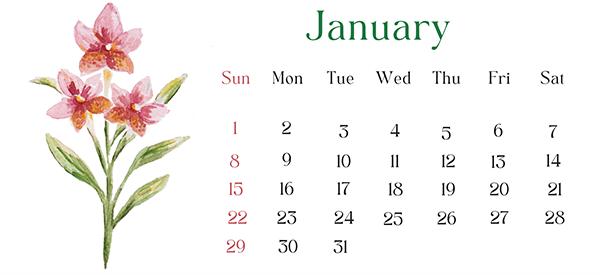
Foraging Calendar: What to Forage in January
As the Holidays wind down many of us are hunting for some calm and peace as the hustle and bustle subside. We, foragers find our peace being in nature and partaking in it. Going back to our hunter-gatherer roots. While you’re out, whether that’s in the woods bundle up or on a hike you can keep an eye out for these plants growing in January.
The USDA Hardiness zone Map is an attempt to divide the country into zones that give us some idea of whether certain plants can grow in any given area. The primary piece of data used to delineate the zones is the average annual winter temperature experienced in that area. This could just be a list of edibles but the temperature varies so much across the U.S.A.
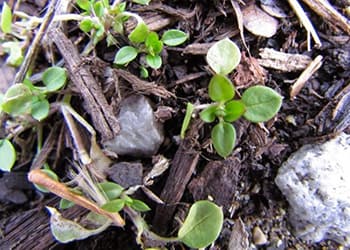 Chickweed (Stellaria media) is a low-growing herbaceous annual plant that often forms a carpet on the disturbed ground of farms, gardens, and lawns. The small, ovate simple leaves grow in an opposite branching pattern on the round, green stems. Chickweed has white flowers, which appear to have 10 petals, but it’s only five petals that are partially split. You can eat the tender leaves and stems raw or cooked. You can also use Chickweed as an anti-itch poultice for irritated skin, or eat it to relieve constipation. Chickweed grows in hardiness zones 4-11 and across the United States but is less common in the Southeast.
Chickweed (Stellaria media) is a low-growing herbaceous annual plant that often forms a carpet on the disturbed ground of farms, gardens, and lawns. The small, ovate simple leaves grow in an opposite branching pattern on the round, green stems. Chickweed has white flowers, which appear to have 10 petals, but it’s only five petals that are partially split. You can eat the tender leaves and stems raw or cooked. You can also use Chickweed as an anti-itch poultice for irritated skin, or eat it to relieve constipation. Chickweed grows in hardiness zones 4-11 and across the United States but is less common in the Southeast.
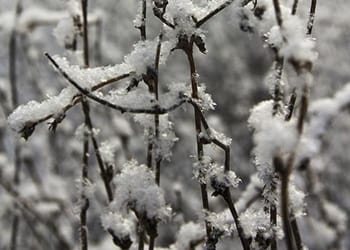 Chicory (Cichorium intybus): look for its dead stalks with dried flower sepals along the stalk and in the branch joints. You can also look for minute leaves at the base of the stalk which resemble dandelions, yet are slightly fuzzy (dandelion leaves are smooth). The tiny leaves that stay on during winter are edible. You can dig, wash, chop, and roast them until brittle to create a steeping mixture that can be used like coffee grounds. You can use the root as a coffee replacement, though it doesn’t possess any caffeine. Chicory grows across the United States and in hardiness zones 3-10.
Chicory (Cichorium intybus): look for its dead stalks with dried flower sepals along the stalk and in the branch joints. You can also look for minute leaves at the base of the stalk which resemble dandelions, yet are slightly fuzzy (dandelion leaves are smooth). The tiny leaves that stay on during winter are edible. You can dig, wash, chop, and roast them until brittle to create a steeping mixture that can be used like coffee grounds. You can use the root as a coffee replacement, though it doesn’t possess any caffeine. Chicory grows across the United States and in hardiness zones 3-10.
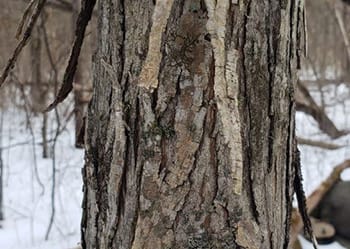 Hickory (Carya) trees are deciduous hardwood trees. The leaves alternate and the nuts have a “double” nutshell. There’s a husk that peels off, revealing a nutshell underneath. Hickory nuts have a multi-chambered inner nutshell. Hickory nuts are a calorie-dense wild plant. One ounce of shelled hickory nut meat contains 193 calories, with most of that coming from fat. Most hickory nuts taste like their relative, the pecan. These sweet and fatty nut meats are edible in raw form, picked right out of the shell. Hickory trees grow across the Eastern United States in hardiness zones 4-8.
Hickory (Carya) trees are deciduous hardwood trees. The leaves alternate and the nuts have a “double” nutshell. There’s a husk that peels off, revealing a nutshell underneath. Hickory nuts have a multi-chambered inner nutshell. Hickory nuts are a calorie-dense wild plant. One ounce of shelled hickory nut meat contains 193 calories, with most of that coming from fat. Most hickory nuts taste like their relative, the pecan. These sweet and fatty nut meats are edible in raw form, picked right out of the shell. Hickory trees grow across the Eastern United States in hardiness zones 4-8.
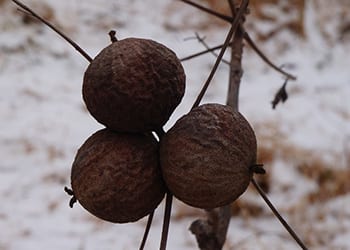 Black Walnuts (Juglans nigra). Walnuts are tall growing deciduous hardwood trees with round or oblong nuts. Black walnuts are large green and round when they are freshly fallen, though the rough round husks turn black in the winter. The tasty nut meat contains 173 calories an ounce, with a fair bit of protein, magnesium, phosphorus, copper, and manganese. Mix into bread or add to soups. Black walnut grows in the continental United States in hardiness zones 4-9.
Black Walnuts (Juglans nigra). Walnuts are tall growing deciduous hardwood trees with round or oblong nuts. Black walnuts are large green and round when they are freshly fallen, though the rough round husks turn black in the winter. The tasty nut meat contains 173 calories an ounce, with a fair bit of protein, magnesium, phosphorus, copper, and manganese. Mix into bread or add to soups. Black walnut grows in the continental United States in hardiness zones 4-9.
⇒ Where to Forage for Free in Your City (Video)
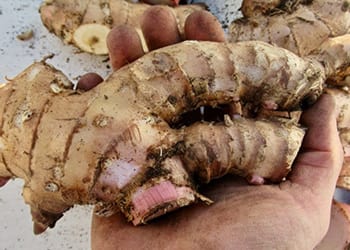 Galanga (Alpinia galanga) is a perennial herb. The rhizomes are cylindrical and branched, hard, reddish brown or pale yellow-green, with a strong smell. The leaves are oblong and alternate. The plant has many flowers that are white or yellowish, and fragrant. Although it looks like ginger, you can identify it by its lighter skin and tougher flesh. Galanga has been traditionally used for many years to treat several different illnesses including colds, pain, inflammation, and stomach ache, and it also is an antioxidant. You can use Galanga as a replacement for ginger. Galanga grows in Florida in hardiness zone 9-11.
Galanga (Alpinia galanga) is a perennial herb. The rhizomes are cylindrical and branched, hard, reddish brown or pale yellow-green, with a strong smell. The leaves are oblong and alternate. The plant has many flowers that are white or yellowish, and fragrant. Although it looks like ginger, you can identify it by its lighter skin and tougher flesh. Galanga has been traditionally used for many years to treat several different illnesses including colds, pain, inflammation, and stomach ache, and it also is an antioxidant. You can use Galanga as a replacement for ginger. Galanga grows in Florida in hardiness zone 9-11.
While all of these are located in America, we don’t want to leave our overseas readers out of the loop. Countries like Canada and Australia are also abundant with delicious plants.
Canada’s weather aligns more with the United States and many of the plants above can grow in Canada’s ecosystem. Canadians can use the hardiness zones to apply to their regions.
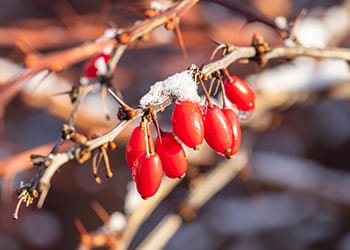 Barberry (Berberis canadensis) is a deciduous shrub in the barberry family, measuring 8- 10 feet in height. The small, ovate, alternate, toothed leaves are clustered at nodes. The bark is gray and has sharp, double-branched spines along branches. The fruits are small, egg-shaped berries, red to purple. Each fruit contains 1- 3 small black seeds. Its berries have been used in traditional medicine for centuries to treat digestive issues, infections, and skin conditions. They have a tart taste and are used to make jellies and jams. Barberry grows in hardiness zones 4-8.
Barberry (Berberis canadensis) is a deciduous shrub in the barberry family, measuring 8- 10 feet in height. The small, ovate, alternate, toothed leaves are clustered at nodes. The bark is gray and has sharp, double-branched spines along branches. The fruits are small, egg-shaped berries, red to purple. Each fruit contains 1- 3 small black seeds. Its berries have been used in traditional medicine for centuries to treat digestive issues, infections, and skin conditions. They have a tart taste and are used to make jellies and jams. Barberry grows in hardiness zones 4-8.
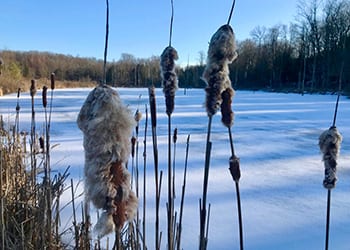 Cattails (Typha latifolia) have iconic brown seed heads that have exploded into a mass of ivory-colored fluff (which makes for great tinder). These grass-like plants will be 3 to 9 feet tall with an oval cross-section to the lower stalk. You’ll find them growing in wet conditions. You can scrape out the white starchy material inside the long brown rootstocks and use it to thicken soups and stews. You can also dry and grind it into flour. Grows in hardiness zones 3-10.
Cattails (Typha latifolia) have iconic brown seed heads that have exploded into a mass of ivory-colored fluff (which makes for great tinder). These grass-like plants will be 3 to 9 feet tall with an oval cross-section to the lower stalk. You’ll find them growing in wet conditions. You can scrape out the white starchy material inside the long brown rootstocks and use it to thicken soups and stews. You can also dry and grind it into flour. Grows in hardiness zones 3-10.
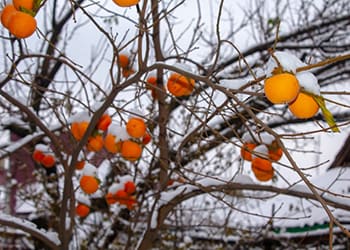 Persimmon (Diospyros virginiana) trees are dark gray-brown with scaly bark. The leaves alternate, simple, four to six inches long, oval, narrowed, or rounded, and turn yellowish orange in the fall. The fruit is round or oval and usually orange-yellow, sometimes bluish, and from 2 to 6 cm in diameter. Use Persimmons in raw form, or dried in tea. Persimmons grow in hardiness zone 4-9.
Persimmon (Diospyros virginiana) trees are dark gray-brown with scaly bark. The leaves alternate, simple, four to six inches long, oval, narrowed, or rounded, and turn yellowish orange in the fall. The fruit is round or oval and usually orange-yellow, sometimes bluish, and from 2 to 6 cm in diameter. Use Persimmons in raw form, or dried in tea. Persimmons grow in hardiness zone 4-9.
Australia lies in Plant Hardiness Zones 7 through 12 with some variations across regions and seasons. The caveat with foraging in Australia is it is completely illegal without a permit except for private properties in some places. Without the 104$ permit, you can be fined anywhere from 10,000 to 110,000 dollars depending on where you foraged. If you have a license or are on your own land you can forage freely.
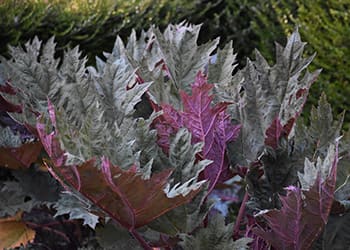 Turkey Rhubarb (Rheum palmatum) is a perennial climber. The stems are ribbed, red, or green and are up to 3m long. It has numerous tubers up to 10 cm long and an extensive root system. Leaves are spear-shaped. Flowers are small and green to whitish. The fruit is a small nut surrounded by three papery wings. Turkish Rhubarb root is well known for helping detoxify the bowel and cleanse the liver. All parts of this plant are used to make supplements and delicious dishes. Turkey Rhubarb can grow in hardiness zones 6-11.
Turkey Rhubarb (Rheum palmatum) is a perennial climber. The stems are ribbed, red, or green and are up to 3m long. It has numerous tubers up to 10 cm long and an extensive root system. Leaves are spear-shaped. Flowers are small and green to whitish. The fruit is a small nut surrounded by three papery wings. Turkish Rhubarb root is well known for helping detoxify the bowel and cleanse the liver. All parts of this plant are used to make supplements and delicious dishes. Turkey Rhubarb can grow in hardiness zones 6-11.
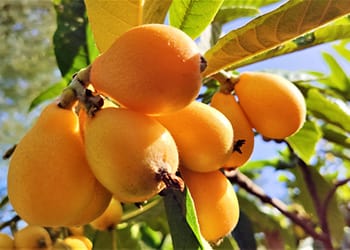 Loquat (Eriobotrya japonica) has up to twelve-inch-long leaves that alternate, simple, oblong, leathery, and dark green. The flowers are white, with five petals, and have a sweet aroma that can be smelled from a distance. The fruit is golden yellow and fuzzy-skinned. There are a few large, shiny, dark seeds in the soft, tart, yellowish flesh. It is eaten as a fresh fruit and mixes well with other fruits in fresh fruit salads or fruit cups. Loquat is also commonly used to make jam, jelly, and chutney. Loquat grows in hardiness zones 8-10.
Loquat (Eriobotrya japonica) has up to twelve-inch-long leaves that alternate, simple, oblong, leathery, and dark green. The flowers are white, with five petals, and have a sweet aroma that can be smelled from a distance. The fruit is golden yellow and fuzzy-skinned. There are a few large, shiny, dark seeds in the soft, tart, yellowish flesh. It is eaten as a fresh fruit and mixes well with other fruits in fresh fruit salads or fruit cups. Loquat is also commonly used to make jam, jelly, and chutney. Loquat grows in hardiness zones 8-10.
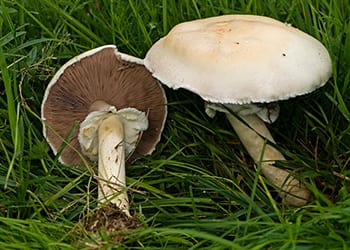 Horse mushroom (Agaricus arvensis) matures at 8 to 20 cm in diameter. White but yellowing gradually with age, smooth or finely scaly, the cap is initially spherical and expands until it is flat or nearly so. The thick flesh is white and firm. The gills are first pale pink, darkening, and then becoming brown, the gills of the Horse Mushroom are free and crowded. Horse mushrooms can make a great supplement in dishes that call for portabella mushrooms. (Be cautious of Yellow Stainer, a similar mushroom, as well as Destroying Angel.)
Horse mushroom (Agaricus arvensis) matures at 8 to 20 cm in diameter. White but yellowing gradually with age, smooth or finely scaly, the cap is initially spherical and expands until it is flat or nearly so. The thick flesh is white and firm. The gills are first pale pink, darkening, and then becoming brown, the gills of the Horse Mushroom are free and crowded. Horse mushrooms can make a great supplement in dishes that call for portabella mushrooms. (Be cautious of Yellow Stainer, a similar mushroom, as well as Destroying Angel.)
Now you’re ready to head out to the woods and pick some wonderful plants. You can make tonics, dishes and so much more. Start your year out in nature. Celebrate the New Year with a list of new plants to keep an eye out for while foraging. Let us know what are your favorites to forage this time of year in the comments.
So-Called Medicinal Plants that Are Actually Dangerous
Get Unlimited Hot Water During the Winter Months with This Easy DIY Project (Video)
Weed Tea: Turning Unwanted Plants Into Fertilizer








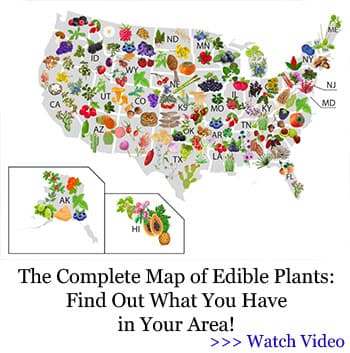
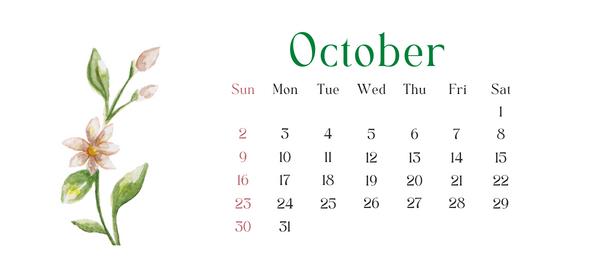
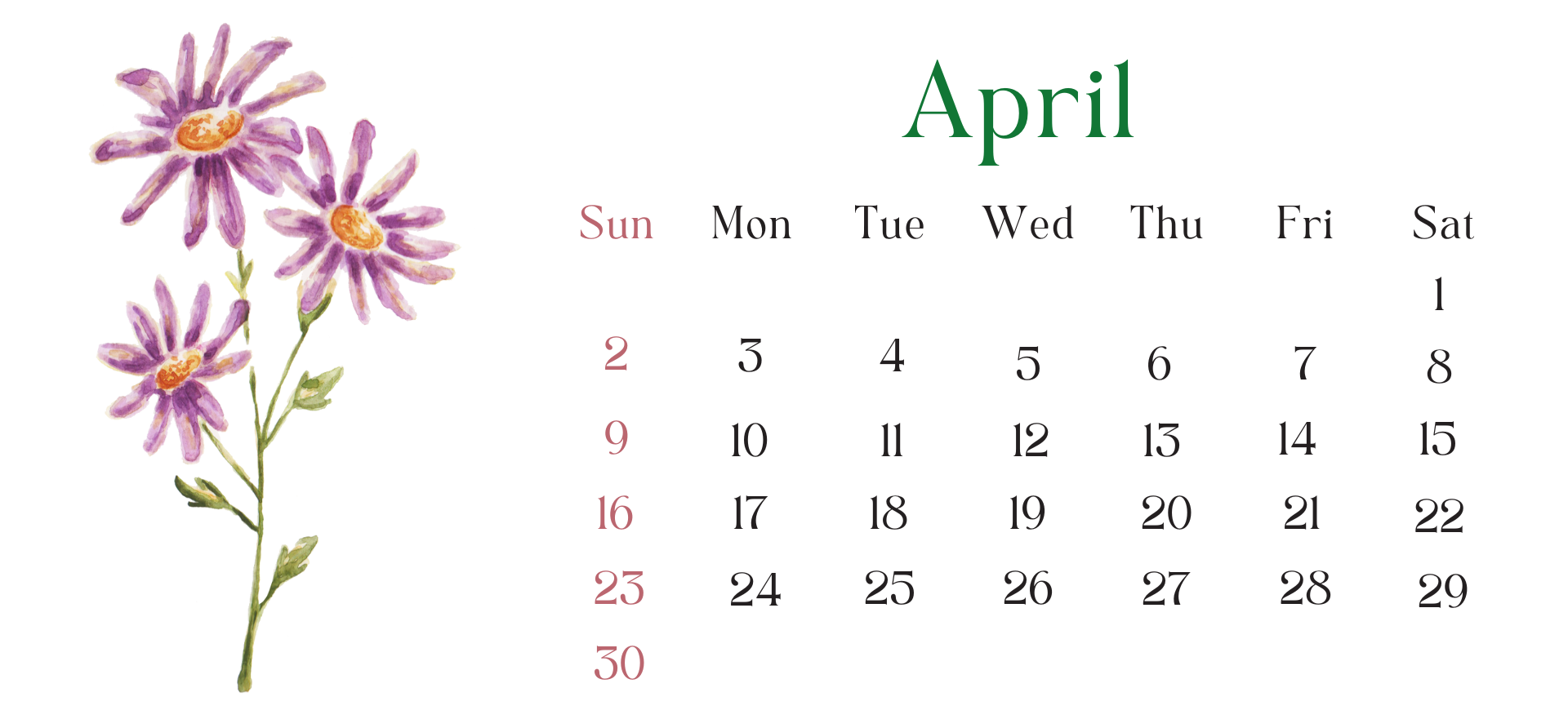
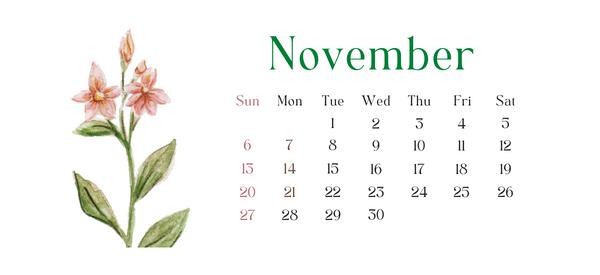
I bought the lost herbs thinking it would tell me about foraging in the UK but there is very little about anything outside of the USA
Sanne here in the Netherlands, but it is inspuiting though 😉
Oops, sorry for the auto correction.
This is not what I wanted to say 😱
Same here in the Netherlands, but it is inspiring. Some plants are indeed the same. Better to walk with someone with some experience.
Me too very little info about Ireland
Hello Gwen,
Most of the plants can be found or grown in Europe as well. You have a full 60 days to try “The Lost Book of Herbal Remedies”. If at any time during those 60 days you are not completely satisfied with your purchase, please send us an e-mail at support@thelostherbs.com and we’ll give you back every cent.
Many blessings and good health!
Hello Gordon,
Most of the plants can be found or grown in Europe as well. You have a full 60 days to try “The Lost Book of Herbal Remedies”. If at any time during those 60 days you are not completely satisfied with your purchase, please send us an e-mail at support@thelostherbs.com and we’ll give you back every cent.
Many blessings and good health!
Me too very little about Australia or the South Pacific and the foraging calendar should consider countries that exist south of the equator.
Hello Gordon,
We truly value your feedback regarding our Foraging Calendar series and we promise we will put it to good use!
Many blessings and good health!
I have tried to receive only one email a week and jeep getting them daily.
I don’t want to unsubscribe but, I will if this isn’t corrected!
Hello Donna,
We have now modified your email subscription as per your request. The update will be implemented within a couple of days.
If you still encounter issues, please send us an email at support@thelostherbs.com.
Many blessings and good health!
Can we buy a calendar that tells us what plant are in are area? Or even one that tells use what month they grow?
what is the best Commiphora myrrha oil to buy?
In what to forage in January,there are 11 different plants to forage but in Herbal Remedies there are 7 plants that are not listed in it.